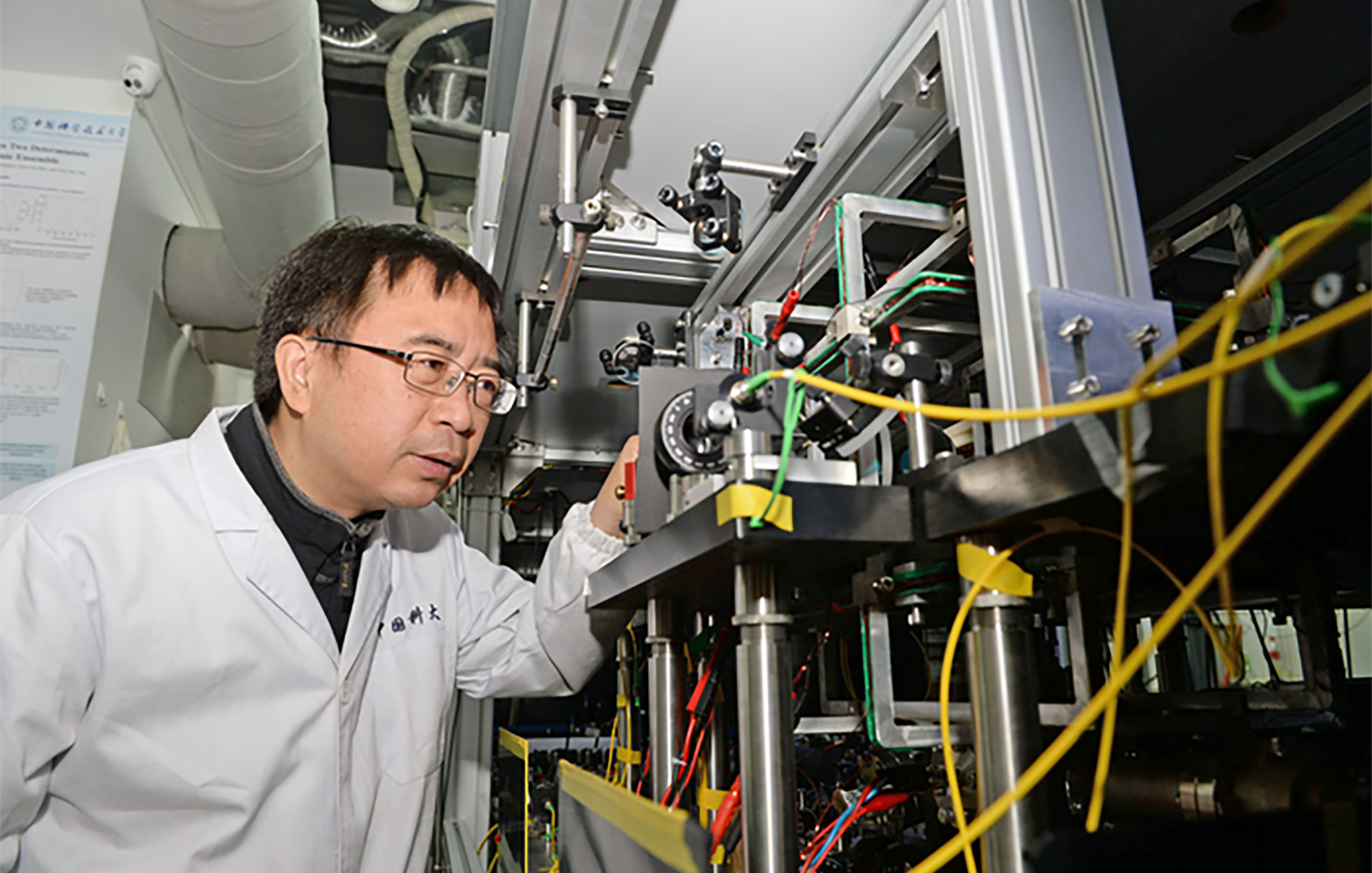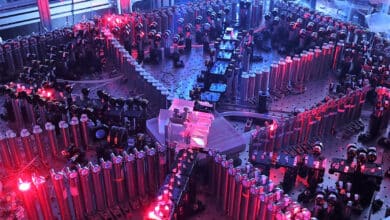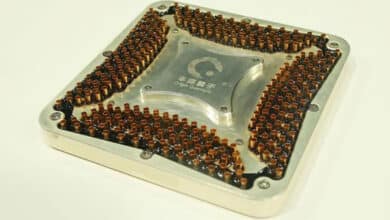China’s Jiuzhang Achieves Photonic Quantum Advantage

Hefei, China (Dec 2020) – A team of Chinese scientists has announced a breakthrough in quantum computing with the development of Jiuzhang, a photonic quantum processor that achieved a major computational milestone. In experiments reported on December 3, 2020, Jiuzhang completed in 200 seconds a mathematical problem that researchers estimate would take a classical supercomputer on the order of 2.5 billion years to solve. This astonishing speedup – about 1014 times faster than the world’s fastest conventional supercomputers – signifies that Jiuzhang has attained “quantum computational advantage,” a level of performance where a quantum computer overwhelmingly outperforms any classical computer on a specific task. It marks only the second time ever that quantum advantage (also known as quantum supremacy) has been claimed; the first was by Google’s 53-qubit Sycamore processor in 2019. Jiuzhang’s achievement is particularly noteworthy as it’s the world’s first light-based quantum computer to reach this benchmark, using photons (particles of light) instead of electronic circuits.
Jiuzhang – named after an ancient Chinese mathematical text – was developed by Pan Jianwei, Lu Chaoyang, and colleagues at the University of Science and Technology of China (USTC). The accomplishment has been hailed as a “state-of-the-art experiment” and a “major achievement” by experts around the globe. Barry Sanders, director of the University of Calgary’s quantum science institute, called it “one of the most significant results in the field of quantum computing” since Google’s 2019 result. The feat instantly cements China’s position among the top tier of nations competing in quantum technology and provides a fundamentally different approach to building powerful quantum machines. Anton Zeilinger, a renowned quantum physicist, remarked that after this experiment “there is a very good chance that quantum computers may be used very broadly someday,” noting the rapid progress by Pan’s group and others. In a USTC press release, the university stated that Jiuzhang’s success puts China in “the first echelon” of the quantum computing race. For China, which invested heavily in quantum research (including launching the first quantum communications satellite in 2017), Jiuzhang represents a proud milestone. But beyond national prestige, this development is a proof-of-concept that pushes the boundaries of computation itself – and carries far-reaching implications for technology and cybersecurity worldwide.
A Photonic Quantum Computer and an Esoteric Task
Jiuzhang’s computing prowess comes from an entirely different hardware paradigm than the quantum computers built by companies like Google or IBM. Instead of superconducting electric circuits, Jiuzhang is a photonic quantum computer: it uses pulses of laser light, optical networks of mirrors and beam splitters, and single-photon detectors to process information. Most of Jiuzhang’s components operate at room temperature, unlike superconducting qubit systems that require ultracold refrigeration (near absolute zero) to function. This photonic approach had long been considered promising, but earlier attempts were limited by difficulties in controlling photons. By 2020, advances such as high-quality laser sources and efficient photon detectors made it possible for Pan’s team to build an optical quantum machine of unprecedented scale.
At the core of Jiuzhang’s demonstration is a specialized computation known as Gaussian boson sampling. This task involves sending many indistinguishable photons through a complex optical circuit and sampling the resulting light intensity patterns. In Jiuzhang’s case, 50 parallel laser pulses (ultrafast “femtosecond” pulses) are first converted into 50 squeezed-state photon sources. These photons are injected into a labyrinthine optical interferometer consisting of 300 beam splitters and 75 mirrors, with 100 output channels. As the photons propagate and split, they create an exponentially large number of possible paths. If two photons arrive at the same beam splitter simultaneously, a quantum phenomenon called boson bunching occurs, affecting the distribution of outputs. Finally, an array of 100 ultra-sensitive photon detectors records how many photons exit each channel. One can think of the setup as a maze of glass and mirrors through which dozens of photons race; the pattern in which they emerge is exceedingly hard for a normal computer to predict. Jiuzhang essentially performs random sampling from a 100-dimensional quantum interference pattern, a problem believed to be intractable for classical algorithms due to its connection with calculating matrix permanents (a #P-complete problem in complexity theory).
Crucially, this experiment doesn’t output a single number or factor some integer – it produces a collection of sampled data that reflects the complex quantum interference of 76 detected photons. Verifying quantum advantage required showing that no existing classical simulation could replicate these samples in a reasonable time. Pan’s team estimated that simulating Jiuzhang’s full experiment on a classical supercomputer (even using the best algorithms available) would take astronomically long – on the order of 2.5 billion years on the Sunway TaihuLight, one of the world’s top supercomputers. In terms of raw performance, Jiuzhang solved in about 3 minutes what a classical supercomputer would need billions of years to compute. Equivalently, the photonic processor executes the boson-sampling task ~100 trillion times faster than any classical computer known today. This gap is so huge that it clearly meets the criterion of quantum supremacy: a quantum device doing something that no feasible classical machine can do. The results, published in the journal Science, were rigorously validated by checking that Jiuzhang’s output distribution had genuine quantum characteristics and wasn’t mimicked by some spoof classical process.
Why does this esoteric task matter? For one, it proves that quantum advantage is not limited to a single platform or algorithm. Google’s Sycamore chip achieved a similar milestone in 2019 using superconducting qubits and a random circuit computation; now Jiuzhang has done it with photons and a different problem. This diversity of approaches strengthens confidence that quantum computers can dramatically outperform classical ones for certain tasks. Boson sampling itself doesn’t have immediate practical use – it was proposed by computer scientists as a kind of “shortcut” to demonstrate quantum computational power. But succeeding at this experiment is like breaking the sound barrier for photonic computing: it shows the hardware is handling an immense complexity of quantum states reliably. “We now possess the tool that makes it possible to build a quantum simulator that can outperform a classical computer,” said physicist Peter Lodahl (who was not involved in Jiuzhang) about the significance of reaching this threshold. In the future, similar photonic setups might be adapted to simulate molecular vibrations, perform graph theory computations, or other specialized jobs beyond classical reach. Moreover, Jiuzhang’s all-optical architecture offers some practical advantages – for example, photons travel fast and don’t suffer thermal noise, and scaling up does not necessarily require cryogenics. The experiment thus validates photonics as a viable route toward extremely powerful quantum computation, complementing the solid-state qubit approach taken by others.
How Jiuzhang Compares to Google’s Sycamore and Other Milestones
Jiuzhang’s accomplishment inevitably invites comparison with Google’s Sycamore, the quantum processor that achieved the first claimed quantum supremacy result in October 2019. Sycamore is a 53-qubit superconducting chip that operates at millikelvin temperatures inside a dilution refrigerator. Google’s team programmed Sycamore to perform a random circuit sampling task (essentially executing a random sequence of quantum logic gates and measuring the output bitstring probabilities). The Sycamore processor generated one million random samples from its quantum circuit in about 200 seconds, a feat that Google estimated would take a state-of-the-art classical supercomputer around 10,000 years to replicate. This huge separation led Google to declare it had achieved quantum supremacy. To put it simply, Sycamore took a few minutes to do something that would have taken classical computing at minimum thousands of years.
Google’s announcement was a landmark in computing, but it was also met with scrutiny. Engineers at IBM – a long-time leader in quantum computing – immediately pointed out that Google’s classical benchmarking may have been too conservative. IBM researchers found that by using smarter simulation techniques and the massive Summit supercomputer, the Sycamore experiment could be simulated in roughly 2.5 days (instead of 10,000 years). IBM argued that while Google’s result was an impressive scientific achievement, it hadn’t yet reached an absolute barrier for classical computing. “If one leverages all the classical resources and algorithms available, the task might be difficult but not impossible for a classical supercomputer,” IBM noted, suggesting the term “quantum supremacy” be taken with a grain of salt. This debate over Google’s claim underscored that the quantum/classical boundary is a moving target – classical algorithms can improve, and defining when a quantum machine definitively wins can be tricky.
In Jiuzhang’s case, however, the separation is so extreme (billions of years vs minutes) that there is essentially no dispute; it’s a clear quantum victory on that problem. Notably, Jiuzhang’s advantage ratio is even larger than Sycamore’s, meaning the photonic experiment outpaced classical capabilities by a bigger margin than Google’s did. That said, Sycamore and Jiuzhang tackled different tasks – random circuit sampling vs boson sampling – so their results aren’t directly comparable in a one-to-one sense. Rather, each demonstrated the same qualitative leap in performance using very different hardware and algorithms. In 2019, this chip performed a random quantum circuit sampling task in 200 seconds that was estimated to take thousands of years on a classical supercomputer, a landmark demonstration of quantum supremacy. Google’s approach contrasts with Jiuzhang’s photonic system, highlighting the diverse paths toward quantum computing breakthroughs.
Beyond Google, IBM’s efforts in the years leading up to 2020 also set important milestones in quantum computing, albeit with a different philosophy. IBM unveiled a 50-qubit quantum processor prototype as early as November 2017 – the first time any company had built a quantum processor at that scale. By 2019, IBM had a 53-qubit system of its own, which it made available to researchers and business clients via the cloud (IBM’s Quantum Computation Center in New York). IBM touted this as the largest general-purpose quantum computer accessible for external use at the time. Unlike Google’s one-off supremacy experiment (which was tailored to a specific random circuit), IBM emphasized general reliability and quantum usefulness. It introduced the concept of “quantum volume” – a metric combining qubit count, coherence time, gate fidelity, and connectivity – to measure a quantum computer’s practical computational power. This focus meant that instead of racing to an outright supremacy claim, IBM worked on steadily improving performance on useful tasks and error rates. IBM’s Quantum Experience platform allowed thousands of users to program real quantum chips online, and by 2020 IBM had demonstrated quantum volume improvements (doubling nearly every year) on their devices. While IBM publicly questioned the significance of Google’s supremacy claim, it also celebrated incremental progress such as achieving a quantum volume of 64 on a 27-qubit system in mid-2020 – tying the record for the highest quantum computational power at that time (a record shared with a 6-qubit ion-trap system from Honeywell). In short, Google and USTC sought dramatic “moonshots” to prove quantum advantage on specific tasks, whereas IBM and others focused on broadening the capabilities and stability of quantum processors.
It’s also important to recognize other parallel approaches in the quantum computing landscape before 2020. Trapped-ion quantum computers offered an alternative to superconducting and photonic systems. Companies like IonQ and Honeywell developed quantum processors using individual ions (charged atoms) trapped in electromagnetic fields and manipulated with lasers. These ion-trap systems had fewer qubits (on the order of 10–20 qubits by 2020), but they achieved very high fidelity operations, making them competitive in certain metrics. In fact, in 2020 Honeywell announced it had built the “world’s highest performing quantum computer” based on ions, with a record quantum volume of 64 (matching IBM’s best) despite using only 6 qubits. Ion-trap devices didn’t attempt a “supremacy” experiment, but their strengths in accuracy and long coherence times pointed to yet another viable quantum technology. Meanwhile, quantum annealers like those from D-Wave (which boasted over 2000 qubits, but of a different, specialized type) had for years been solving optimization problems using quantum effects. However, D-Wave’s machines had not clearly demonstrated a definitive speedup over classical algorithms in general, and they operate on a different principle (adiabatic quantum annealing rather than gate-based computation).
In the context of these milestones, Jiuzhang’s success stands out as the first photonic quantum computer to cross the quantum advantage threshold. Photonic quantum computing had seen incremental progress in the 2010s – for example, small-scale boson sampling was demonstrated with 3–5 photons by groups in Europe and by Pan’s team in earlier years – but nothing on the scale of 76 photons and 100 modes. The very concept of boson sampling as a route to quantum advantage was originally proposed in 2011 by Scott Aaronson and Alex Arkhipov, and it took nearly a decade to realize experimentally. Aaronson, one of the co-inventors of boson sampling, praised Jiuzhang’s experiment as “very impressive” and helped put it into perspective for the broader community. He noted that while Jiuzhang is a landmark, one should also ask what practical impact it has and what comes next – questions we turn to in the following sections.
Implications for Quantum Computing and Industry
The demonstration of quantum computational advantage by Jiuzhang is a pivotal scientific achievement – but it’s not a general-purpose quantum computer. Unlike Google’s Sycamore, which is a programmable gate-based processor (able to run arbitrary circuits up to a certain size), Jiuzhang is built to do one type of calculation (boson sampling) extremely well. You cannot use Jiuzhang to factor numbers, search databases, or run Shor’s algorithm; it’s essentially a highly specialized photonic simulator. This highlights a key point: current quantum supremacy experiments, whether Google’s or USTC’s, are proof-of-concept demonstrations rather than useful machines. They show that quantum physics can indeed deliver computational power beyond what was previously possible, but they are not yet at the stage of solving real-world problems. As Till Weinhold, a quantum physicist not involved with the project, noted about Jiuzhang: “It is closing the gap to the boundary where we can start to exploit a quantum computational advantage, but we are not there yet”. In practical terms, industries cannot immediately take Jiuzhang and apply it to, say, drug discovery or logistics optimization. However, the implications of the result are profound for the future of the field and the tech industry’s roadmap.



